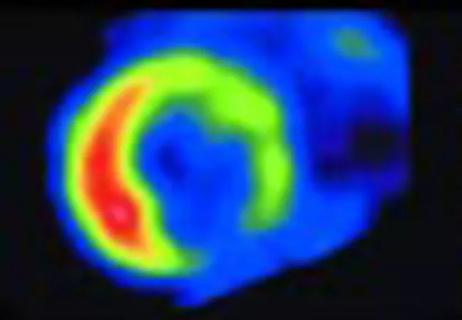Results from a large registry study provide an updated picture of recurrent rejection

Despite an upward trend in survival for children undergoing heart transplantation, 10% will experience two or more episodes of rejection, which significantly increases their risk for graft loss. These were among the main findings reported by pediatric transplant cardiologists who analyzed data from more than 1,000 patients over 20 years.
Advertisement
Cleveland Clinic is a non-profit academic medical center. Advertising on our site helps support our mission. We do not endorse non-Cleveland Clinic products or services. Policy
They reported the results of their large registry study in the Journal of the American College of Cardiology, providing an updated picture of recurrent rejection.
Lead author Shahnawaz Amdani, MD, Section Head of Pediatric Heart Function and Transplant at Cleveland Clinic Children’s, observed the issue firsthand while caring for a transplant recipient experiencing multiple episodes of rejection. Curious about the potential impact of recurrent rejection on graft loss and cardiac allograft vasculopathy (CAV), a long-term complication of heart transplant, he turned to the literature.
The last study on this topic—and the only multicenter study—was published more than 20 years ago. This inspired a new investigation to explore prevalence, outcomes and risk factors for recurrent rejection in the current era.
The authors define an episode of rejection as an event discovered through clinical exam, echocardiogram, or endomyocardial biopsy findings that warrants an anti-rejection intervention. This could be a treatment or an adjustment to the standard immunosuppressive therapy. Rejection is considered recurrent when these episodes occur two or more times.
Overall, rejection outcomes have significantly improved over the past 40 years—both in the first year when they are at highest risk, and in the longer term.
“So, we are improving our immunosuppressive management, but are we decreasing the rates of recurrent rejection? And, more importantly, are we decreasing the impact of recurrent rejection on graft life?” asks Dr. Amdani.
Advertisement
Further, are there demographic differences in the rates of rejection? Dr. Amdani serves as Chair on a committee of the Pediatric Heart Transplant Society (PHTS) concerned with uncovering and eliminating differences within the subspecialty.
“Ultimately, the goal of our study was to arm transplant cardiologists with updated risk factors, so they know who to follow more closely,” he says.
Using the PHTS database, Dr. Amdani and collaborators extracted data from 6,342 heart transplant recipients from 2000 to 2020. They used the registry to create an early-era and current-era cohort of patients to analyze trends and get an updated picture of prevalence and risk.
The authors also compared children with no episodes of rejection or just one to those with recurrent rejection to elucidate a risk profile. According to their findings, children who experienced recurrent rejection were more likely to have the following clinical and demographic characteristics:
The authors also found that recurrent rejection significantly increases the risk of graft loss. Children experiencing recurrent rejection had much lower graft survival than those experiencing no or one episode of rejection at five and ten years following heart transplant (p < 0.0001).
“Every rejection episode increases the hazard for graft loss by 47%. That is astronomical. There is no other episode or event in transplant medicine that increases graft loss by that much,” exclaims Dr. Amdani.
Advertisement
The type of rejection also matters: Those with recurrent mixed rejection or antibody-mediated rejection were at greater risk for graft loss than those with acute cellular rejection, meaning that the effects from activation of the humoral arm of the immune system are likely more damaging.
The study also showed that Black children experiencing recurrent rejection are at greater risk for developing CAV and graft loss than white children (p < 0.05 for all).
“This is incredibly disheartening,” says Dr. Amdani, “particularly in the current era where outcomes in transplant medicine continue to improve. There should be no reason why a child based on the color of the skin or where they're living should have different outcomes.”
Armed with this information, Dr. Amdani stresses to transplant medicine clinicians that it’s “our responsibility to make sure patients don’t experience recurrent rejection, as it puts them at significant risk for graft loss.”
The landscape of monitoring continues to change. More centers are adopting noninvasive detection techniques that are more sensitive to subtle changes, potentially giving transplant cardiologists the opportunity to intervene earlier.
“Future studies should focus on the impact of noninvasive assessment of allograft and how it has changed the landscape of detection of rejection and ultimately its impact on graft life.”
Advertisement
Advertisement

Study validates a noninvasive alternative to invasive coronary angiography

Integrated care model reduces length of stay, improves outpatient pain management

A closer look at the impact on procedures and patient outcomes

Experts advise thorough assessment of right ventricle and reinforcement of tricuspid valve

Study also finds that 26% of children with cancer have mutations in DNA repair genes

A closer look at current uses and future opportunities

Experts are challenging the one-size-fits-all paradigm

Quality improvement project addresses unplanned extubation